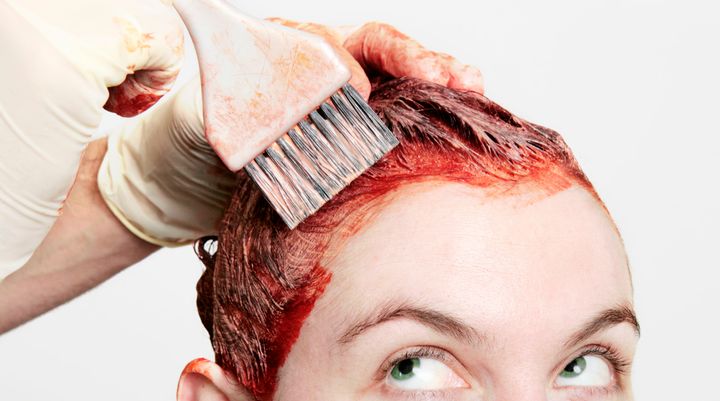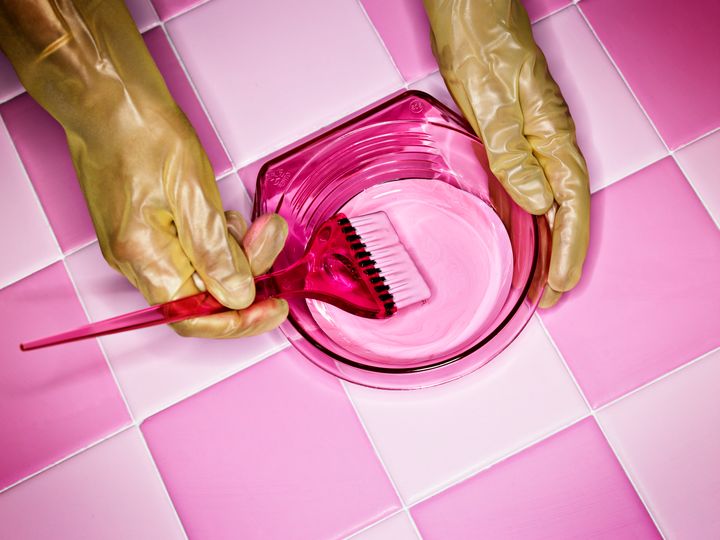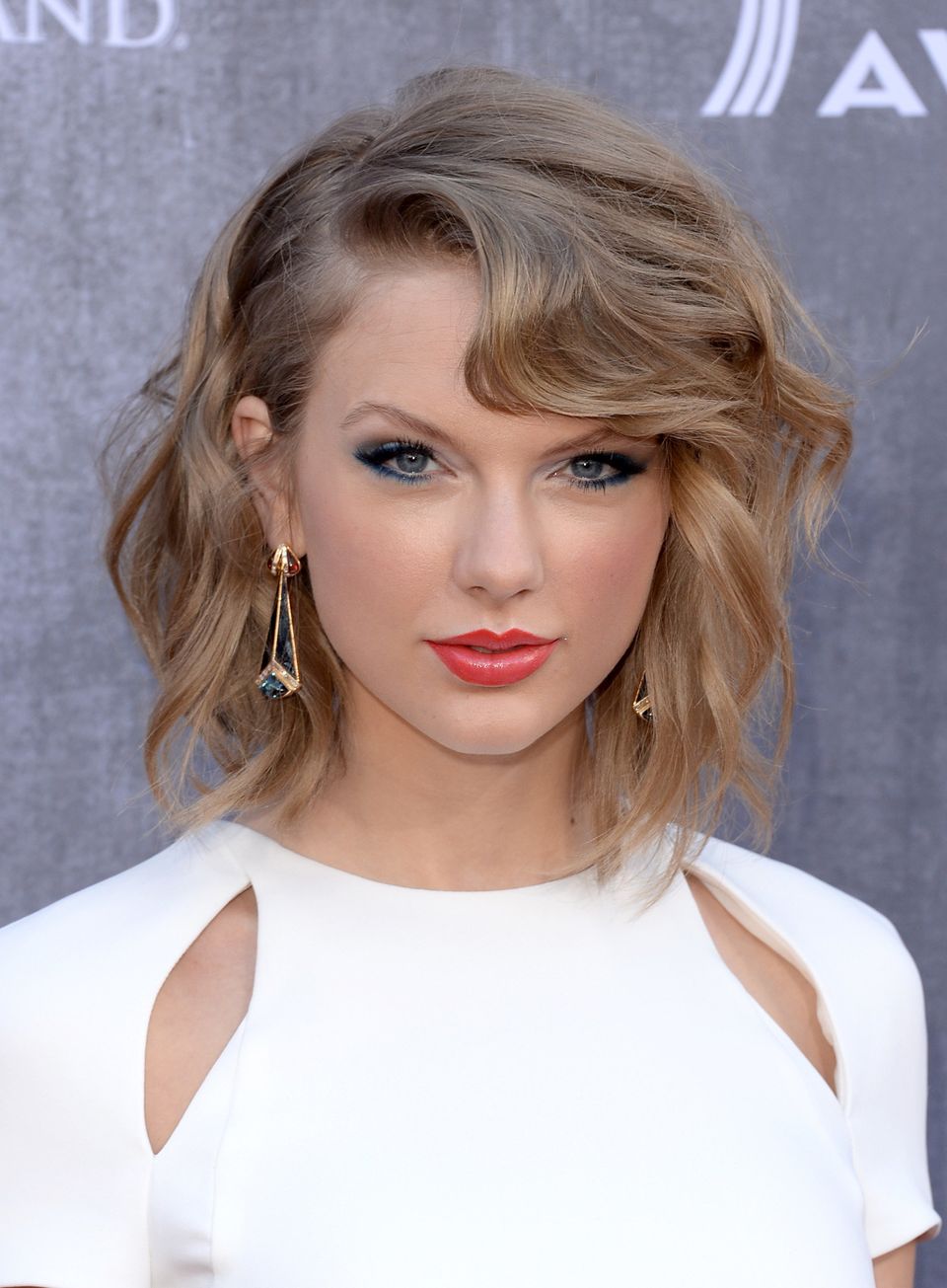
We know how tempting it is to browse the hair color aisle whenever you’re in the drugstore, fantasizing about what life might look like with red or blonde hair. But before you make any impulse purchases from the hair dye aisle, there are some things you should know.
For instance, the color you see on the box isn’t always the color you’re going to get. And when it comes to ingredients, you’d be surprised to know what some of these products contain.
Below, we had professional stylists tell us the worst mistakes one could make when attempting to color their hair at home.
1. Choosing a color based on the picture on the box
The first step to changing your hair is picking the color you want your hair to be. But if your choices are limited to those on the boxes at the drugstore, you might have a hard time finding a color that will actually deliver your desired result.
As Tabitha Mitchell, a Houston-based stylist who runs BeautyzMyBiz at Salon Meyerland, told HuffPost, one of the first mistakes someone can make with at-home hair color is assuming their hair will end up looking exactly like the picture on the box.
“Everybody’s hair is different,” she said, noting that some people’s hair is more porous than others. Even if you put the same color on three people with the exact same color hair, the result won’t be exactly the same on each of them, she said.
Additionally, if you’re basing your color choice on the hair swatches attached to the shelves, you should know that those strand samples show what the dye looks like on white hair, Jaxcee, the color director at Hair Rules, said. You need to manage expectations.
For example, Jaxcee said, “for someone who wants to do their hair at home, you definitely have to pay attention to how dark your hair is and realize that you’re probably not going to get a result that is any more than three levels lighter than your hair, if you’re trying to lift it.”
If your hair is as dark as Selena Gomez’s and you want it to be as blonde as Miley Cyrus’, she added, “that’s probably not going to happen.”

2. Unknowingly picking a potentially harmful dye
There’s a good chance you’re not heading to the drugstore and looking for a dye that could damage your hair. But according to both Chelsey Pickthorn, founder of Pickthorn Salon in Brooklyn, and Emaly Baum, a colorist based in New York City, some of the box dyes out there contain ingredients that don’t always react well with salon dyes. So, if you’ve colored your hair at home and, for whatever reason, decide to have it changed at a salon, take note.
Pickthorn said that some brands sell products containing metallic dyes, and if you put a lightener or bleach on hair that’s been colored with these metallic dyes, it can cause “a really insane chemical reaction.”
“I’ve seen hair in a foil, where it’s conducting heat, it will smoke,” she said. “It’s so scary. It’s something that you’re like, how is this even possible?”
Be sure to tell your professional hair stylist which products you’ve used in the recent past to avoid any potential problems.
3. Not applying the product correctly
There are a few things that can go wrong when it comes to the application of hair color.
Often when people try to color their hair at home, they tend to go straight for the hair around the front of the face ― the easiest spot to see ― Pickthorn noted. The problem with doing that, she said, is that the hair that’s about three inches around the face processes differently than the rest of our hair, “because that hair is there to sort of protect us. ... It weathers our face creams and astringents and things like that.”
“A lot of times, it will absorb to a darker color around the face,” she added. “[When applying, make] sure you don’t just go straight for the front.”
Another mistake people tend to make when using at-home dyes ― specifically when re-coloring ― is applying the color all over the head, as opposed to just on the roots (or the regrowth), Jaxcee said. If you’re applying color all over your head every time you re-dye it, you could end up with a tone that looks unnatural or opaque ― a “shoe-polish-y kind of look” ― she noted.
The hair at your roots also processes differently than the rest of your hair, Pickthorn said, noting that if you’re applying a dye to your roots and your already-colored hair, the roots could end up a different color than the rest of your strands.
“Color on top of color will make a darker color,” she said. “Then you’re getting this kind of translucent root, where it’s not fully covered, and your ends can look really dark in comparison.” (On the contrary, she said that applying bleach over already-bleached hair could result in breakage, and no one wants that.)
To avoid any of that from happening, all the stylists we spoke to agreed that when re-applying at-home color to your already-colored hair, you should only cover the roots. But even then, it can be really difficult to only apply color to such a small area evenly, especially if you can’t fully see your whole head, Pickthorn added.
4. Not taking your hair texture into account
As noted above, everyone’s hair is different. People with different hair thicknesses and textures will get different results when dyeing their hair. In slightly more technical terms, the number of cuticle layers varies in different hair types.
As Pickthorn explained, some Asian hair textures tend to have about 16 to 18 layers, while European or mixed-race hair could have between 10 and 16. Curly or Afro-textured hair tends to have between eight and 12 cuticle layers. The fewer cuticle layers your hair has, the quicker the dye or bleach will penetrate into the core of the hair.
5. Not getting the timing right
This one is a little more straightforward.
“If you take it off too soon, the color won’t process perfectly,” Pickthorn said. “And if you leave it on too long, some color lines are progressive and as they stay on, they keep getting darker and darker.”
Leaving a dye on too long, which Mitchell said is more common than not long enough, could also result in dry, brittle hair.

6. Trying to bleach it
Bleaching your hair is essentially “the most intense chemical process you can do,” Baum said, noting that even with a hairdresser who isn’t trained properly, it can be dangerous.
“When you want to be blonde, it’s almost like an investment in your hair,” Baum said. “To do it at home, there’s just so much that can go wrong. You can make your hair orange, it can fall out, and all sorts of terrible things can happen.”
All the stylists we spoke to agreed that bleaching your hair, especially if you’re trying to go from dark to very light, is something that’s best left to the professionals.
“[I would] zero percent recommend that,” Mitchell said. “When you’re doing bleach, it can be so harsh and it’s so strong. It’s not something you should use unless you’re a professional.”
7. Or trying to darken previously lightened hair
Adding color to previously lightened or bleached hair can be very tricky, as hair that’s been lightened is more porous. That means it won’t necessarily respond to the dyes the same way virgin hair would.
“If you think you’re going to make it dark all over, but you have previously lightened highlights, you can end up with over- or underconcentration on your ends, where it’s super porous,” Pickthorn said. “It will either overcolor ― so it gets darker on the ends and lighter at the root ― or depending on the color that’s chosen, it could turn green, or blue, these murky kind of tones. When you’re hair’s so light, you’re basically stripping out all the natural color in there, and to get back to a darker result, you’ve got to fill back those underlying tones.”
Her best recommendation for anyone trying to darken light hair is to “definitely go to a professional.”
“It’s so tricky to apply it correctly and choose the right color, on top of having to add those golds and oranges back into the hair for it to actually stick,” she said.
The main takeaway?
When in doubt, it’s always best to see a professional who has the knowledge and expertise to help you achieve your hair goals.
In Baum’s opinion, unless you know you want to have the same exact hair color for the rest of your life, you should skip the at-home dyes. “I think doing it in general is a huge mistake and I would never recommend doing it,” she said.
Of course, a major appeal of the at-home dyes is their price, which is much lower than going to a salon. But if you end up messing up, you might find yourself having to spend even more than you initially would have if you had just gone to a salon in the first place. As Mitchell noted, there are way too many factors to consider when it comes to dyeing hair.
“You don’t want to damage your hair,” Baum added, suggesting that it’s worth spending a little extra money upfront to avoid a potential hair crisis.
If you have colored your hair at home and hate the results, “step away from the color and call a professional,” Pickthorn said.
